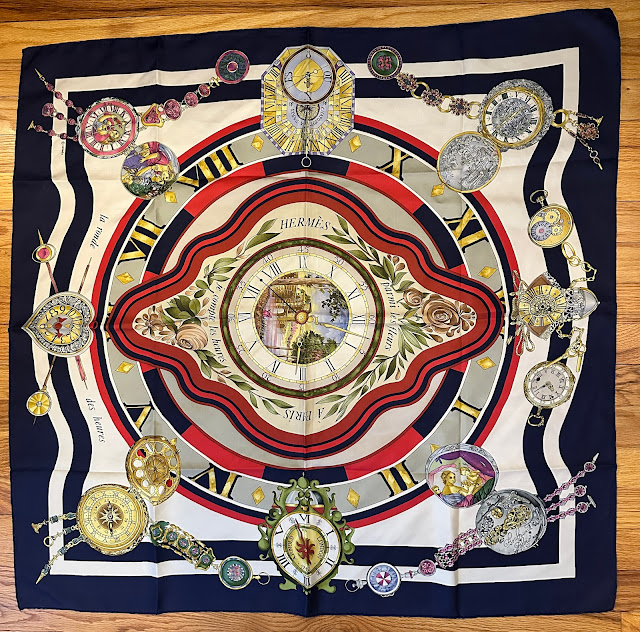This lovely Hermès scarf celebrates the festivals or parties of the "Roi Soleil," the Sun King, Louis XIV of France.
Most scarves have a title incorporated into the design.
The title of this scarf is prominent in the center of the scarf.
At the center, bottom, is the company "HERMÈS - FRANCE."
The scarf was designed for Hermès in 1995 by Michel Duchène. He has signed the scarf, M Duchène, on the drum, in the top right corner.
 ....
....
The care tag is also on this corner, as it usually is. This care tag has the letter B. It has been suggested that the letters are assigned to exceptionally talented seamstresses who hand-roll the edges and stitch the hems as well as add the care tag. But you can't believe everything you read on the internet. It's a nice story, though. . . is it true?
This scarf is damask, with the design being "fireworks."
The damasks are expensive to produce, so they are rarely, if ever, faked.
My interest began in collecting the damasks, because I knew I would not be buying a counterfeit, but I have broadened my search. I think I can identify fakes accurately and avoid them;
The corners have instruments to make delightful music for the fêtes.
In the corners, there are a horn, a drum, and stringed instruments.
Took a while to find - the copyright mark is on the "horn" of this instrument.
If you know the names of these instruments, I hope you will put the name(s) in the comments or send an email.
Like all Hermès scarves, this hangs and drapes well.
To see other scarves
I have blogged,
There are lots of them!







































